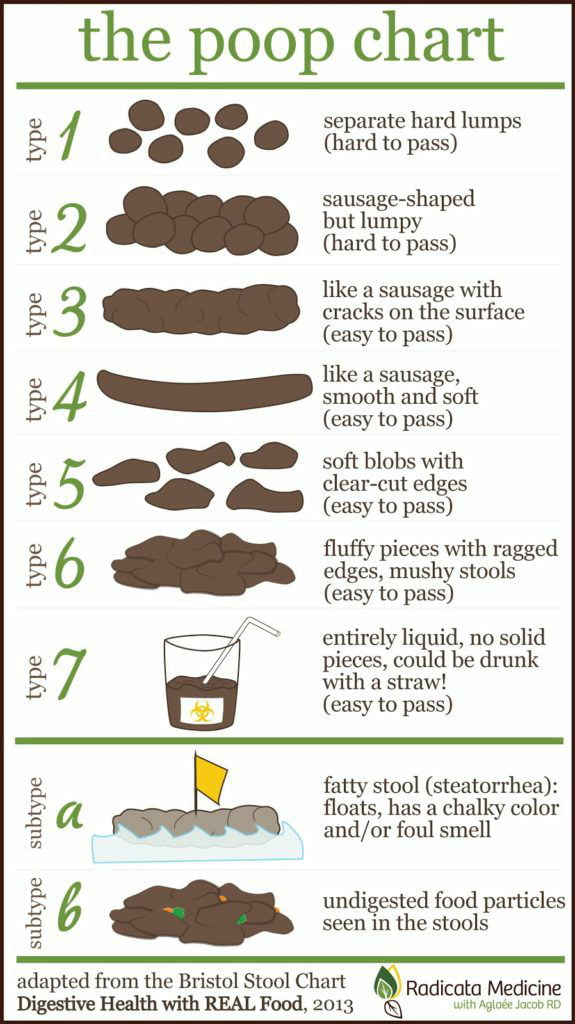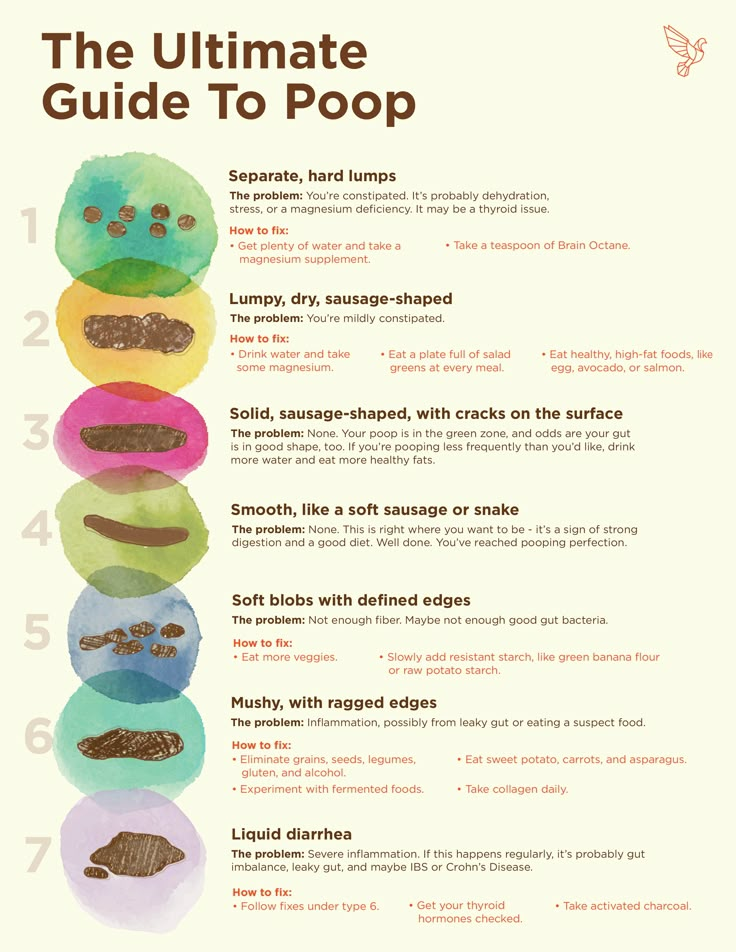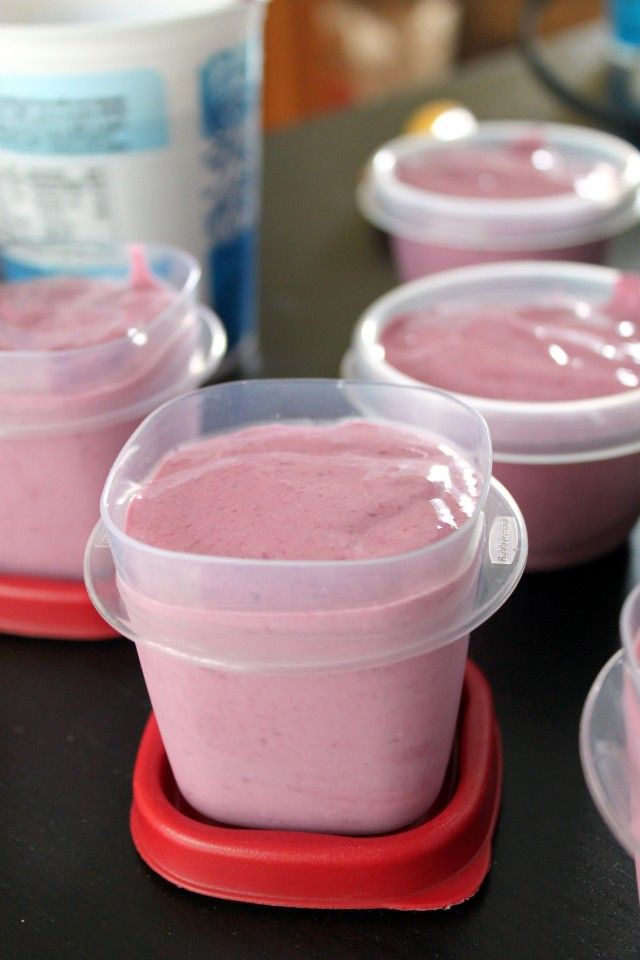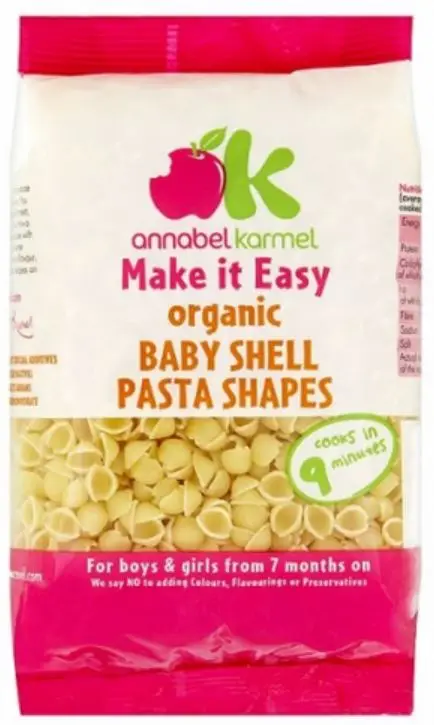When to give baby lumpy food
Food Textures: Baby Weaning Recipes
Adventures with textures
Introducing lumpy food
Once your baby has mastered eating puréed food, usually at around 7 months of age, it will be time to move on to different textures. Learn how lumpier textures are important for the development of speech muscles that will eventually enable your baby to talk.
Brighter futures start here
Discover more about infant development to help shape your baby's future
Join now for free
Somewhere around 7 months, once your baby has got the hang of eating puréed food, it will be time to introduce them to new food textures.
Many parents feel anxious about their baby gagging or choking at this stage. However, gagging is a normal part of learning to eat, and the benefits of eating chunkier textures are enormous.
The World Health Organization (WHO) recommends that lumpy foods should be introduced between 6 and 9 months of age. Research shows that babies who are not introduced to new textures during this time are less likely to accept new foods later in childhood1.
Lumpier food textures have also been shown to support the development of speech muscles2. It takes time to master different textures of food, so give your 7 month old baby plenty of time and opportunities to practise this next step.
Learning to chew and swallow different types and textures of food doesn't happen overnight. It takes time to master different textures of food, so give your baby plenty of time and opportunities to practise this next step. By 8 months, a baby’s ability to chew and swallow purées and soft solid foods is considered to have reached maturity, whereas for more solid textures (such as dry cereals) the chewing efficiency (the number of chews required before a food is swallowed) continues to improve for some time – until at least their second birthday3.
How delaying lumpy foods can lead to feeding difficulties later on
Studies suggest that most babies are willing and able to take on the challenge of learning to chew lumpier foods at around 6 or 7 months of age. If left until after 10 months, introducing solid, textured foods can become more difficult4. Late starters have been shown to be more likely to eat a limited range of foods, to refuse food and have difficulty with chewing3.
According to some research, delaying the introduction of solids until 9 or 10 months or later is more likely to lead to the following feeding problems:
- Refusing solids
- Refusing milk
- Only eating certain solid foods whilst refusing others, which may lead to nutrient deficiencies
- Not eating enough food
- Fussy eating at 15 months and older
- A tendency to eat less fruit and vegetables than other children later on1
The best approach is to introduce a variety of textures into your baby’s diet once they’ve got the hang of eating purées. Ideally this should be between 6 and 9 months.
Ideally this should be between 6 and 9 months.
Next steps
Tips for introducing new textures:
- Start with simple flavours that are familiar to your baby, such as potato and carrot
- Begin with thicker purées with small soft lumps and gradually introduce chunkier textures
- Move on to mashing food
- Make your own weaning recipes
Just like the first stage of weaning, introducing new food textures can take time and patience. If your baby doesn’t seem keen, don’t rush them. Getting used to different textures is a new skill that your baby has to learn.
View references
1. Coulthard H et al. PubMed. Delayed introduction of lumpy foods to children during the complementary feeding period affects child’s food acceptance and feeding at 7 years of age. Matern Child Nutr 2009;5:75-85.
2. Northstone K et al. The effect of age of introduction to lumpy solids on foods eaten and reported feeding difficulties at 6 and 15 months. J Hum Nutr Diet 2001;14:43-54.
J Hum Nutr Diet 2001;14:43-54.
3. Le Reverend BJD et al (2013) Anatomical, functional, physiological and behavioural aspects of the development of mastication in early childhood. Brit J Nutr 111: 403–414
4. llingworth RS et al. The critical or sensitive period, with special reference to certain feeding problems in infants and children. J Pediatr 1964;65:839-48.
Last reviewed: 5th September 2016
- Aptaclub home
- Baby
- Diet and nutrition
- Weaning & Baby Nutrition - Aptaclub
- Importance of food textures
How to help your weaning baby cope with lumpy food
Congratulations – your baby has mastered the first step of managing simple and smooth purees. So now, it’s time to progress on to making those purees more lumpy. For some babies, they’ll adapt quickly. For others, this change can feel like a big new step and may take longer to learn.
So now, it’s time to progress on to making those purees more lumpy. For some babies, they’ll adapt quickly. For others, this change can feel like a big new step and may take longer to learn.
Don’t worry if your baby does struggle a little – we’ve got plenty of help and advice.
When should I introduce lumps?
Don’t wait too long to start introducing lumpy food to your baby. You have a lovely window of opportunity during these first few weeks and months of weaning, when your baby is really open to new textures and tastes.
So as soon as your baby is comfortable with swallowing smooth purees from a spoon, start to reduce the degree of pureeing you’re doing. If you’re starting weaning at 6 months, most babies will be ready to be eating lumpier foods by 7 months.
- Here’s how to get the right texture for your baby's food
Why do I need to make the food lumpy?
Introducing lumps and texture to your baby’s food is essential for your baby’s development. It’s the important step from smoother purees to chewing solid textures.
It’s the important step from smoother purees to chewing solid textures.
And this skill won’t just help babies tuck into the Sunday roast in a few months’ time; it’s also essential for developing the muscles they need to utter their first few words.
Does my baby need teeth to cope with lumpy food?Surprisingly no. Don’t worry if your baby hasn’t got any teeth; some babies don’t cut their first tooth until well after their first birthday, yet they can still progress onto textured food.
Even if your baby’s first teeth haven’t appeared yet, they will be ready and waiting just under the gums: if you feel them, they will be quite hard.
Hard baby gums are more than capable of getting to grips with first textures.
How do you introduce lumps?
Introducing lumps is a gradual process. Your baby’s first textured foods shouldn’t be much more than a puree, and any lumps should be small and soft.
4 ways to introduce lumps to your baby slowly and carefully:
- To make your baby’s first experience of lumps less startling, choose a meal that your baby’s already had in pureed form which you know your baby likes.

- Put a small amount on the tip of a baby spoon and place it just between his lips so he can suck it off
- Try splitting a batch of cooked veggies into two halves. Puree one portion until completely smooth, but blend the other portion slightly less, and then mix the two together
- Introduce lumps when your baby is most likely to be calm, usually lunchtime. He may be too hungry at his first morning feed time to take kindly to having to negotiate new textures, and too tired at teatime
In our forum, 3-little-princesses suggests: “At this stage, I mashed food with a fork rather than puree it and then gradually left it a little bit lumpier each time. Also, I added a little bit of couscous or baby pasta (soup pasta works just as well) to the purees I was using before to increase the texture gradually too.”
- Find more answers to your questions about introducing lumps
How might my baby react to lumps?
Don’t be alarmed if your baby’s first reaction is to gag. This may just be a surprise reaction to the lumps. Scoop up another spoonful and offer it again. After the initial shock, your baby may then suck it off the spoon.
This may just be a surprise reaction to the lumps. Scoop up another spoonful and offer it again. After the initial shock, your baby may then suck it off the spoon.
More like this
"I found that the lumps weren't so much the problem with my little one but the dryness - so I make sure I add a bit of extra sauce or water to thin thicker foods out," advises Beebee.
Babies don’t start chewing straight away – this is a big development milestone and a skill that will take a while to master. So always watch your baby carefully as they learn to negotiate these new soft lumps.
- Find out how to cope if your baby gags
What if my baby refuses lumps?
Some babies prefer to have their lumpy food given to them separately, rather than encountering the occasional surprise lump in an otherwise runny puree.
So if your baby’s resistant, try offering a smooth carrot puree as usual, but leave some softly steamed carrot batons whole to have on the side.
If it’s clear your baby doesn’t like the new texture, for example by turning their head away, be guided by your baby. Go back to the purees for a couple of days, before trying a few soft lumps again.
Do persevere; this stage can take time, but is essential for your baby’s development.
"My twins were both on purees until they were 13 months old as one of them just couldn't handle lumps of any description" says Jennifer Morrow.
"Even mashed bananas were too lumpy and she'd just gag and vomit. I remember being really paranoid as I feared speech delay and poor muscle tone.
"However, I just left it a few weeks and tried again. They got there in the end!"
Pics: Getty
Read more
- How to help your baby learn to chew
- How do I feed a teething baby?
- How to encourage your baby to eat with a spoon
Article | Complementary foods: start on time
The introduction of complementary foods is an important life stage for both the child and the mother. Ekaterina Kostennikova, a breastfeeding consultant, and Olga Novichkova, a child analytical psychotherapist, talk about how to properly introduce a baby to new foods and whether there is a difference in the introduction of complementary foods in premature babies.
Ekaterina Kostennikova, a breastfeeding consultant, and Olga Novichkova, a child analytical psychotherapist, talk about how to properly introduce a baby to new foods and whether there is a difference in the introduction of complementary foods in premature babies.
The right time
With the start of complementary foods, the baby expands his experience of interacting with the outside world - he gets acquainted with new tastes, smells, sensations. The introduction of complementary foods contributes to the process of separation of the child, if it is correlated with this important developmental stage in time.
WHO recommends that children who are exclusively breastfed should begin complementary feeding no earlier than six months of age. From about this age, the child's needs for nutrients and energy can no longer be 100% satisfied with breast milk, and the introduction of other sources of nutrition becomes a necessity.
With any type of feeding, WHO recommends introducing complementary foods no earlier than 4 months of age. Until this age, the child's neuromuscular coordination is not sufficiently developed, which allows the formation of a food bolus and swallowing it, therefore, the gag reflex is triggered, as well as the reflex of pushing "foreign" objects out of the mouth with the tongue.
Until this age, the child's neuromuscular coordination is not sufficiently developed, which allows the formation of a food bolus and swallowing it, therefore, the gag reflex is triggered, as well as the reflex of pushing "foreign" objects out of the mouth with the tongue.
It was because of these reflexes that in the Soviet years the recommendation to start complementary foods with fruit juices was widespread. However, over time, it became clear that this approach has unreasonably high risks for the health of the child: fruit acids are too aggressive a product for the child's immature digestive system and therefore can harm the gastrointestinal tract. Other risks of starting complementary foods too early also include a high likelihood of food allergies.
As for premature babies, that is, babies born before the 37th week of gestational age, they need more careful attention. If the baby was born only 1-3 weeks ahead of schedule, then, most likely, the difference with children born on time will already level out by six months and prematurity will not affect the start of complementary feeding in any way.
At the same time, babies born before 34–35 weeks of gestation require an individual approach. The main thing is not to create an excessive load on the immature gastrointestinal tract of a child who is not yet ready to receive adult food. The mother of a premature baby should be guided by the developmental standards established by pediatricians and the general signs of the child's readiness for complementary foods:
- food interest;
- ability to hold the head and be in a semi-sitting position with support;
- extinction of the ejection reflex of the tongue.
Complementary feeding guidelines for premature babies
Babies born prematurely, especially with VLBW (very low birth weight) and ELBW (extremely low birth weight), are often developmentally delayed. For a more accurate assessment of development, one should rely not so much on the weight itself, but rather compare it with the height of the child and, by linking these two indicators, judge physical development.
Particular difficulties arise in children with severe damage to the central nervous system, bronchopulmonary dysplasia and other serious diseases. In such situations, correctly introduced complementary foods significantly help the child's body to return to normal.
However, according to WHO recommendations (hereinafter information is provided from the Guidelines for the WHO European Region with a special focus on the republics of the former Soviet Union "Feeding and nutrition of infants and young children"), small children grow and develop normally if they are exclusively on breastfeeding! At the same time, it is important for them not to introduce complementary foods too early (before 6 months), as this slows down physical development.
Complementary foods should not be introduced before the age of four months - until this time, neither the digestive system nor the metabolic processes have yet "ripened" to the full.
Exclusive breastfeeding for up to 6 months has health benefits for children. Complementary feeding before 6 months is justified in case of obvious lack of weight during breastfeeding. Its later appointment (after 6 full months of passport age, which is equal to 26 weeks) is also not recommended due to the lack of a supply of micronutrients in the body and frequent lag in physical development.
Complementary feeding before 6 months is justified in case of obvious lack of weight during breastfeeding. Its later appointment (after 6 full months of passport age, which is equal to 26 weeks) is also not recommended due to the lack of a supply of micronutrients in the body and frequent lag in physical development.
In general, the principles of introducing complementary foods to preterm infants are the same as for full-term infants. Products are introduced slowly and gradually. Preference should be given to freshly prepared food with little use of water (for example, stewing instead of boiling or steaming), as well as industrial baby food products, since they are prepared using environmentally friendly raw materials, they have a guaranteed composition and an age-appropriate degree of grinding, enriched vitamins and minerals.
For premature babies, attention should be paid to the presence of proteins in their diet, which are necessary for accelerated growth. The following amino acids are important: cysteine, taurine, tyrosine. As for the lack of iodine (if detected), then premature babies need it in an increased amount. Also, the need for iron should be attributed to the characteristics of premature and underweight children: they need a good food source of iron earlier than full-term ones.
As for the lack of iodine (if detected), then premature babies need it in an increased amount. Also, the need for iron should be attributed to the characteristics of premature and underweight children: they need a good food source of iron earlier than full-term ones.
In small children, the motility and microflora of the gastrointestinal tract are often impaired, so the order of introduction of products is determined individually.
Throughout the introduction of complementary foods, it is essential to increase the nutritional value of the diet by adding foods to the diet, rather than displacing formula or breast milk. This product remains the main source of nutrients for the child of the first year of life, and possibly even longer.
Stages of introduction of complementary foods
Complementary foods can be divided into 4 stages, in which the relationship between the development of the physiology of the child and the need for trace elements is presented.
Stage 1
When introducing complementary foods, the first task for the child will be to learn how to eat from a spoon. The suggested small amount of food at the tip of a teaspoon will allow the child to learn to remove food with their lips and move it around in their mouth for swallowing. As the first products, mashed one-component products are suitable: cereals (except wheat), boiled at home and mashed rice, mashed potatoes, soft, thick porridge from cereals or vegetables. Complementary foods should be given 1-2 times a day after breastfeeding or formula.
Stage 2
After getting used to spoon feeding, children are ready for new foods, and the indicator is the ability to sit without support and transfer objects from one hand to another. It is possible to introduce well-cooked and mashed meat into the diet (especially the liver, which is well suited in terms of consistency), vegetables, fruits, legumes, grain products. New tastes should be introduced along with previously familiar dishes. Food can be given lumpy, coarser in structure - mixed with mashed potatoes. Frequency - 2-3 times a day.
Food can be given lumpy, coarser in structure - mixed with mashed potatoes. Frequency - 2-3 times a day.
3rd stage
It is marked by the development of more precise motor skills, the appearance of teeth. It is important for parents to encourage motor skills by allowing them to take food with their fingers (eating with their hands). Dairy products can be included in the diet (liquids - in a cup), after 9 months, when breastfeeding is completed, cow's milk is acceptable. Features of food are as follows: softened, mashed into large particles. The diet can include fruits and vegetables, legumes and some fish, meat, liver, eggs, cheese, kefir. You can spread a little butter on the bread. Meal frequency - 2-3 main meals, with light snacks in between (yogurt, kefir, apples).
Stage 4
Focuses on developing independent eating skills. Products mashed or chopped, cubes of fruit, vegetables, cheese, bread. The restriction should be introduced on fatty foods and salt. In general, by the age of one year, children can eat food from the family table, which means the end of complementary foods and the transition to regular food with slight adjustments for age (fatty meat, mushrooms, sweet cakes, etc.).
In general, by the age of one year, children can eat food from the family table, which means the end of complementary foods and the transition to regular food with slight adjustments for age (fatty meat, mushrooms, sweet cakes, etc.).
Products
Cereal products are rich in carbohydrates, micronutrients (but also rich in phytates, which negatively affect the absorption of micronutrients), cysteine. Potatoes are rich in vitamin C and are a source of thiamine. Vegetables and fruits are important as sources of non-nutritional substances (antioxidants) and dietary fiber, vitamins C, A, group B. Dark green vegetables are rich in folate, potassium, and magnesium. Lean meats and fish are good sources of zinc, while liver is an excellent source of protein and essential micronutrients such as taurine and tyrosine. The liver is exceptionally rich in iron and is well absorbed.
Eggs are widely accepted as a versatile food with high biological value (they contain cysteine, taurine and tyrosine, which are important for premature babies), but it is not advisable to introduce proteins into the diet before 6 months - they are associated with allergic reactions.
Dairy products should not be given in large quantities until 9 months, and cow's milk should be given directly between 9 and 12 months. Fermented milk products - yogurt and kefir - are rich in calcium, protein, phosphorus and riboflavin, cheese is rich in calcium, sodium, vitamin A, and contains the amino acid cyrosine.
Fruit juices are safe and healthy in small amounts, but only juices without artificial sweeteners or simple carbohydrates. Honey, tea and herbal teas should not be given to infants due to the negative effect on the absorption of important vitamins and trace elements.
Infant formula is used when micronutrient fortification is required. Together with them, homemade food should be given for a greater variety of taste sensations and textures.
How to increase the energy density of complementary foods
1. Add less water in favor of a thicker product (viscosity should be appropriate for the child's ability).
2. Replace most (or all) of the water with breast milk or infant formula.
3. Add milk powder, vegetable oil, fat to thick porridge no more than 1 teaspoon per 100 g of product.
4. Introduce fruits and vegetables, liver, meat, fish, kefir, eggs into the diet.
More than just food
For children, trying out new tastes and textures opens up a new world of sensations that they never knew before. This expands the mental space of the child and contributes to its development. The insular lobe of the cerebral cortex is responsible for taste recognition, among the functions of which are the perception of body signals, emotions, empathy. Comparing the age recommended by WHO for the start of complementary feeding with the development of the psyche, mutual patterns are visible.
From about six months of life, the baby got used to the image of his mother, adapted to the world around him and began to "let" the world around him into his consciousness. The increase in external stimuli in accordance with the possibilities of their processing by the child's body helps to increase the idea of the world around and oneself more and more, thereby developing the little person.
A way of knowing yourself and the world around you
What is new food for a child? Something unknown, but helping to know your feelings through taste. Food, which is not directly related to mom, is thus a kind of bridge to independence. Now hunger begins to be satisfied not only with mother's milk, but also with the help of something else that can also nourish. Thus, the mother is still close and needed, but symbolically her vital significance is reduced. This moment is the very beginning of the relationship's transformation from dependent intimacy to trust and true love.
A child can eat new different foods on his own - with his hands, with a spoon, holding a bag of mashed potatoes. In addition to the further development of fine motor skills, this helps to form independence, the right to choose what and how to eat, smearing complementary foods as preparation for the next stage of child development. All these new sensations are large in scope, but the child is already able to assimilate this experience and use it for good.
Complementary foods symbolically turns the child to self-knowledge, contributing to the development of individuality.
Communication with the mother
When introducing complementary foods, the mother must remember that until the age of one, complementary foods are an additional, but not the main source of nutrition for the child. Breast milk or its substitutes are still the main ones. This is due to several factors.
1. The nutritional value of breast milk is not comparable to foods that are usually introduced as first complementary foods (for example, the calorie content of mashed marrow is only 15 kcal per 100 g, while the calorie content of breast milk is 70-80 kcal).
At the same time, the capacity of the stomach in infants is still small - about 30 ml per 1 kg of body weight, so the child is not yet able to consume large amounts of food. And if at the same time its nutritional value is low, the child's needs for energy and nutrients will not be satisfied.
2. The need of a six-, seven-, eight-, and even twelve-month-old (one-year-old) child in close contact with the mother is no less than that of a one-month-old baby. The gradual introduction of new food along with the presence of the mother will calm the child from the excitement of the new experience. For both the child and the mother, a gradual transition from dependent intimacy to not so dependent freedom and the right to choose is important.
When a mother finds a way to give closeness to her baby beyond breastfeeding, it supports the baby in the transition to separation, as the vital need for food no longer comes so directly from the mother.
It should also be noted that suckling (mother's breast, her substitute, but in mother's arms, with mother's smell, loving look) satisfies the most important need for basic security. The transition to biting from a purely sucking reflex has its origins in other senses, thereby developing the psyche.
Better not be late!
Delaying the start of complementary foods can also have adverse health effects on the baby. Among the risks of starting complementary foods too late (after 8-9 months) are the following:
Among the risks of starting complementary foods too late (after 8-9 months) are the following:
- growth retardation and lack of energy and nutrients;
- development of micronutrient deficiencies, especially iron and zinc;
- delayed development of chewing skills and loss of food interest;
- delay in the skill of bringing objects to the mouth - will slow down the development of fine motor skills and the development of the child as a whole.
Interviewed by Anna Demina
Photo: Collection/iStock
How to feed your baby properly
It is important.
Share
0What is the first complementary food and why is it needed?
American Academy of Pediatrics and WHO consider Infant and young child feeding / WHO: up to 6 months, a child needs only milk for full growth and development. However, over time, the needs of the child's body increase. And milk is no longer able to provide the necessary nutrients.
The first complementary food has another purpose: chewing solid food helps to form the chewing apparatus (it includes jaws, teeth, masticatory and facial muscles) and taste habits.
When is it time to introduce complementary foods to a child
Once again: pediatricians insist What are the recommendations for breastfeeding? exclusively breastfed for the first 6 months of life. Therefore, manufacturers who indicate “4+ months” on jars of baby food violate these recommendations. However, this is partly justified.
Most babies are actually ready Solid foods: How to get your baby started eating solid foods at 4-6 months of age. By this time, they have lost the reflex that causes newborns to push foreign objects out of their mouths with their tongues. And they develop coordination of movements that allows you to move food from the front of the mouth to the back - for swallowing.
However, all children are unique. Therefore, there is still no general exact time when it is necessary to start complementary foods. To determine whether your child is specifically ready to eat baby food, experts from the reputable research organization Mayo Clinic recommend looking for additional signs.
To determine whether your child is specifically ready to eat baby food, experts from the reputable research organization Mayo Clinic recommend looking for additional signs.
Complementary foods should be started if all of the following conditions are met:
- the baby is already able to hold the head in a stable upright position;
- sits, albeit with support;
- infant actively puts hands or toys into mouth;
- shows a desire to eat something by leaning forward and opening his mouth.
And do not delay with the first complementary foods. Your baby should start eating solids before they are 9 months old. According to study Delayed introduction of lumpy foods to children during the complementary feeding period affects child’s food acceptance and feeding at 7 years of age, children who did not receive lumpy foods before that age had more feeding problems by age 7. In particular, they were more likely to forego fruits and vegetables and miss out on important nutrients. As a result, growth and development slowed down.
As a result, growth and development slowed down.
How to introduce complementary foods
Start with a small one-ingredient fruit or vegetable puree or infant formula diluted with breast milk. Put a small amount of food on the tip of a soft plastic spoon (this is important so as not to accidentally damage the gums) and offer to the child.
Do not put food in your mouth! The baby should reach out to her on their own. If your child is not very interested in the contents of the spoon, let him just sniff the food and try again in two or three days.
If he shows an obvious craving for new products, there are a few important rules to follow.
1. Offer products with only one ingredient for the first few weeks.
No sugar, salt or other additives. If you want your child to love a variety of foods in the future, give him the opportunity to try each new taste and texture.
2. Wait 3-5 days before introducing a new product.
During this time, you will see if your child has an allergic reaction to the previous type of food.
Watch for diarrhea, vomiting, rash. If these symptoms occur while using a particular product, be sure to consult a pediatrician about this topic.
3. Combine only ingredients that have already been tested
For example, if a child ate applesauce for 3-5 days without problems, and then also carrots, you can offer him an apple-carrot mixture. But apple-peach is not worth it yet - until you make sure that there are no allergic reactions specifically to peach.
4. Be sure to include meat purees in your diet
Meat contains iron and zinc, substances that are essential for development in the second half of a child's life. If for some reason such purees are not available, choose grains fortified with iron.
5. At 8-10 months, offer cuts instead of purees
By this time, most babies can chew and swallow small portions of finely chopped soft foods: soft fruits, vegetables, cheese, pasta, well-cooked meats.
What not to give to a child during the introduction of complementary foods
Many people are afraid to give their children the famous allergens, such as peanuts, eggs, fish. However, according to the Mayo Clinic, these precautions are unnecessary. Even harmful. Early introduction of the same peanuts or eggs, on the contrary, reduces the risk of developing an allergy to this food in the future.
However, according to the Mayo Clinic, these precautions are unnecessary. Even harmful. Early introduction of the same peanuts or eggs, on the contrary, reduces the risk of developing an allergy to this food in the future.
There is only one caveat. If one of the child's relatives has this disease, a specific product should be offered with caution: only at home (and not, say, in a restaurant) and with an antihistamine approved by a pediatrician on hand.
Nevertheless, foods that are contraindicated during complementary feeding do exist. Here they are:
- Juices. Their use can lead to diarrhea and weight problems. In addition, the habit of sipping juice during the day provokes the development of caries on milk teeth. Pediatricians recommend introducing such drinks no earlier than the child is one year old.
- Sugar in any form. Condensed milk on the nipple, a piece of biscuit, a sip of a milkshake - these treats only seem harmless. In fact, sugary foods and drinks can influence future food preferences.
 And in the end, “reward” the child with excess weight and related health problems. The American Heart Association recommends American Heart Association Scientific Statement Do not add sugar to children's food or drink during the first two years of life.
And in the end, “reward” the child with excess weight and related health problems. The American Heart Association recommends American Heart Association Scientific Statement Do not add sugar to children's food or drink during the first two years of life. - Cow's milk. It is low in iron. If a child leans on cow's milk, a deficiency of this important trace element may develop. Set aside the first glass for the age after a year.
- Honey. It may contain spores that can cause infant botulism.
- Foods that can choke on. In the first year of life, do not offer pieces of meat or cheese, grapes, thermally unprocessed vegetables and fruits, unless they are cut into small pieces. Also banned are unground nuts, seeds, popcorn, caramel. And, unexpectedly, marshmallows and peanut butter.
Finally, not so much a ban as a warning. Do not feed your child exclusively rice porridge and mixtures - be sure to alternate them with other foods. Products made from this cereal may contain arsenic Arsenic in Rice and Rice Products.










